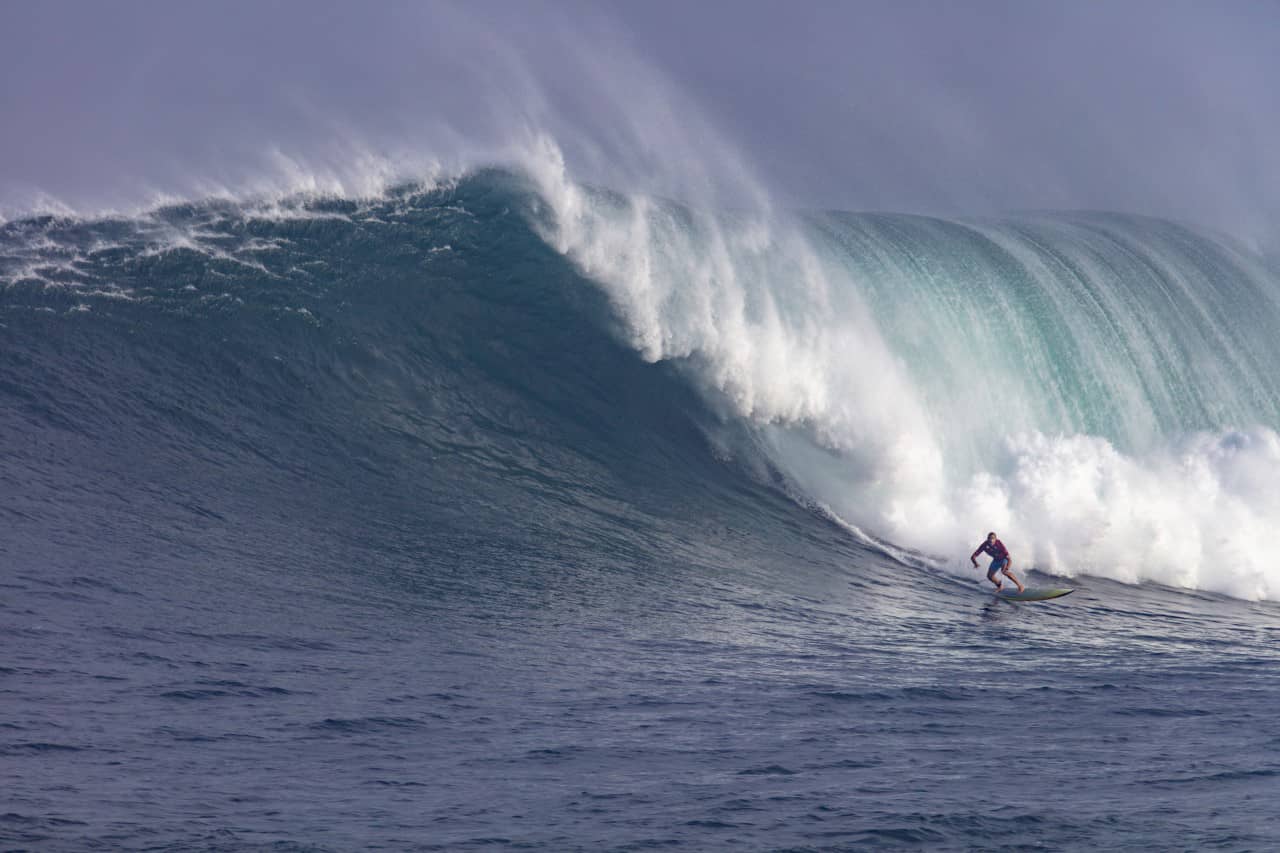Risk
If ever there was a trait that is underestimated, it is the ability to assess risk. And as I get older, the degree of risk becomes much more of a consideration in every decision. Can careful risk assessment be taught?

Articular cartilage paste graft and regenerative injection patient Aaron U surfing 20-foot waves in North Shore Oahu for the first time after his recovery
The risk of failure was never a big concern for me as a young athlete. I would try anything. The crazier the dare, the more fun the experience. The pain of failure was just not that big. Even physical injuries were downplayed. I simply threw myself into whatever interested or challenged me.
This changed as I grew into adulthood. Failure hurt more—both the body and the ego. Later, as other people started depending on me, the risk of failure began to expand beyond just me alone. And as I became a physician and orthopaedic surgeon, failure of my efforts—while an occasionally unavoidable part of the specialty—became even harder. It drove me to create and perform procedures that could almost always be fixed if they didn’t work out the first time. I chose to care for people like myself: athletes with one or two physical issues to which I could find or create a solution, and get them back into their game. Learning from each success and failure, I was driven to constantly improve the science and practice of orthopaedic surgery.
As an older surgeon, I appreciate the cost of failure and do a better job of clarifying the risk to my patients. Is the action to be taken worth the risk? Are the downsides fixable?
In everyday life as well as in sports, the assessment of risk—and the reduction of it—determines the longevity of the activity. Mental errors are the number one cause of most injuries I see from sports. Dumb decisions that lead to avoidable injuries become incredibly costly. Not thinking before doing may have been well tolerated in my youth, but isn’t in midlife.
So: In our daily perception of the world around us, how do we inculcate the assessment of risk to the level of a constant voice agent in our thinking? Instead of saying to ourselves or our kids “Don’t do something, you may get hurt,” the lesson could be more nuanced: “Here are the pros and cons of your decision.” While not encouraging decision paralysis, a rapid risk assessment habit could develop into a lifelong pattern of wise decision-making and injury avoidance.
My father’s prophetic words were always “Don’t take any unnecessary chances.” I simply didn’t comprehend the advice, which seemed so conservative to my young ears.
Now I know what they mean. I understand the value of controlled risk—and the price of failure.
